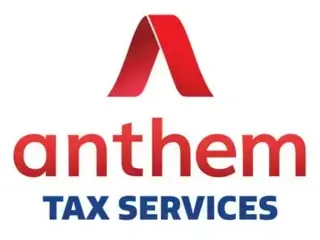Owing money to the IRS isn’t just stressful—it can feel overwhelming. Penalties add up, interest keeps growing, and suddenly you’re stuck in a tax nightmare. But there’s good news: tax relief programs exist specifically to help people in your situation. Whether you’re behind on payments or just can’t pay your full tax bill, there are options to reduce your burden and regain control.

Tax solutions for consumers with over $10,000 in owed taxes.
- Save money on your taxes, or get 100% of your fees back—guaranteed
- Discover your tax reduction options with a free, no-obligation eligibility analysis
- Provide comprehensive support for federal and state tax challenges
- 10+ years of expert tax resolution experience
- Trusted A+ rating from the BBB

Assisting Taxpayers with $15,000 or more in Tax Debt
- Trusted Nationwide, 4.9★ Client Rating
- Free Consultation & Direct IRS Access
- Elite Team of Tax Pros: Attorneys, CPAs, Enrolled Agents
If tax debt is weighing on you, it’s worth exploring how these programs work—and whether you qualify.
What Is Tax Relief?
Tax relief is a broad term for any program or strategy that helps reduce the amount of taxes you owe, make payments more manageable, or eliminate penalties and interest. It’s not about “getting out of taxes” but rather finding a realistic way to resolve your debt with the IRS or your state.
These solutions are designed for people facing genuine financial hardship, major life disruptions, or honest mistakes—not just anyone looking to dodge a bill.
Common Types of Tax Relief Programs
Here’s a breakdown of the most common forms of tax relief:
Offer in Compromise (OIC)
This program lets you settle your tax debt for less than you owe. If you truly can’t afford to pay your full tax liability, the IRS may accept a lower amount.
Eligibility is based on your income, expenses, and asset equity
You’ll need to submit detailed financial documentation
Approval rates are low, but it can erase a significant chunk of debt
Installment Agreements
If you just need more time, you can request a payment plan. This spreads your tax bill into monthly payments over time.
Short-term plans (120 days or less) and long-term plans are available
Interest still accrues, but penalties are reduced once you’re in a plan
Easy to set up online if you owe under $50,000
Penalty Abatement
In some cases, the IRS will waive penalties if you have a valid reason—like illness, natural disaster, or a death in the family.
You must show “reasonable cause” or qualify for a first-time abatement
Often applies to failure-to-file or failure-to-pay penalties
Interest typically isn’t waived, but cutting penalties can still help a lot
Currently Not Collectible (CNC) Status
If your financial situation is so tight that you can’t afford any payments, the IRS may temporarily pause collection efforts.
You won’t have to make payments, but interest continues to accrue
The IRS can revisit your case later if your income improves
This gives breathing room, not permanent forgiveness
Can State Taxes Be Included?
Yes—many states have their own tax relief options. These vary widely but often mirror federal programs. If you owe state income taxes, it’s worth checking with your state tax agency to see what assistance is available. Some even offer amnesty programs that reduce penalties if you pay during a specific time window.
Do You Need a Tax Relief Company?
You can apply for most IRS relief programs on your own—but navigating tax law can be complicated. That’s where tax relief companies come in. They typically offer services like:
Filing for OICs or installment plans
Communicating directly with the IRS on your behalf
Negotiating to stop wage garnishments or bank levies
The downside? These services can be expensive, and not all companies are trustworthy. If you’re thinking of hiring help, look for firms with experienced tax professionals, clear pricing, and a good reputation. Always check their credentials before signing anything.
Red Flags to Watch Out For
Unfortunately, the tax relief industry has its share of scams. Here are a few warning signs:
Promises to “erase” your tax debt without reviewing your financials
Demands for large upfront fees before doing any work
Pressure tactics or scare tactics
Lack of transparency about who’s working on your case
The IRS only accepts offers or relief based on real financial hardship. If a company guarantees results before seeing your finances, it’s probably not legit.
Quick Tax Relief Comparison Table
| Program | Goal | Best For | Requirements |
|---|---|---|---|
| Offer in Compromise | Settle for less than owed | Severe financial hardship | Full financial disclosure |
| Installment Agreement | Spread payments over time | Moderate debt, steady income | Up-to-date tax filings |
| Penalty Abatement | Remove penalties | One-time mistakes, hardship events | Proof of cause or good history |
| Currently Not Collectible | Pause collections | Extremely low income | Annual review of financial status |
Getting Started: What to Do First
If you’re dealing with tax debt and need relief, here are your first steps:
File all your returns. Even if you can’t pay, unfiled returns make you ineligible for relief.
Review your finances. Know your income, expenses, and assets before applying.
Contact the IRS or a trusted tax pro. You can start the process yourself or get help if it feels overwhelming.
The earlier you act, the more options you’ll have—and the less stress you’ll deal with.
Tax Relief Is Real, but It’s Not Instant
Tax relief isn’t a magic wand, but it is a real way to regain control of your financial life. With the right program—and a little persistence—you can stop penalties from piling up, make manageable payments, and even reduce what you owe.
So if the IRS is breathing down your neck, don’t ignore it. There’s help available—and a clear path forward.



